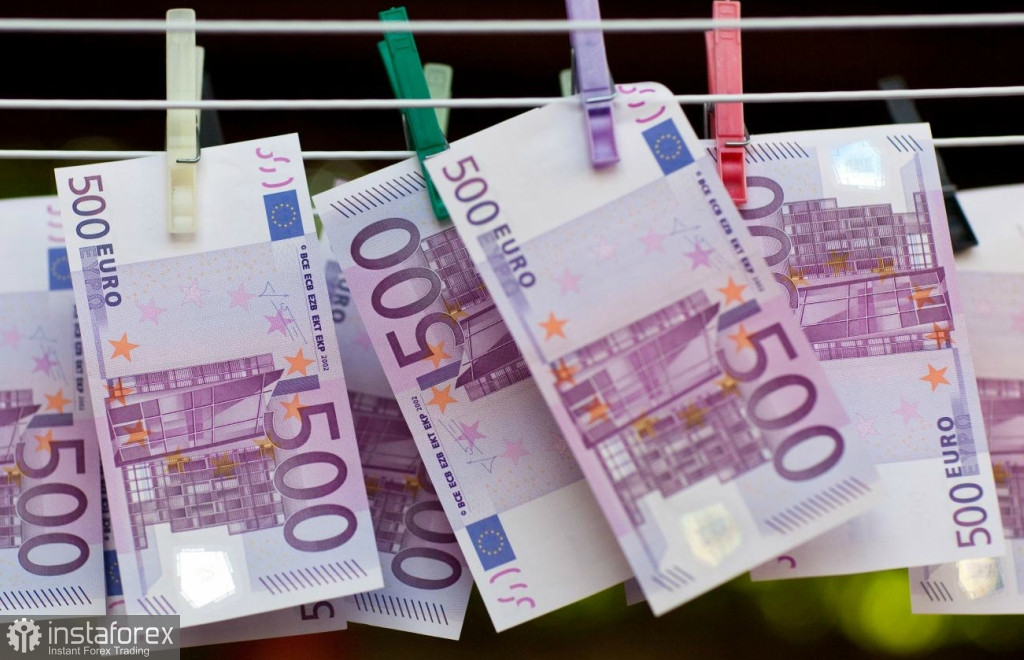The euro corrected quite strongly against the U.S. dollar at the beginning of this month, but the statistics released at the end of last week suggest that the European Central Bank, even with a great desire, will not be able to retreat from its policy of raising interest rates. The reason for this is high core inflation, which reached a record high in the euro area in March this year.
According to the report, base prices, which exclude volatile commodity categories, rose 5.7%, while headline inflation posted a record decline to 6.9% from 8.5% in February.

As the surge in energy consumption following Russia's sting operation in Ukraine fades away, ECB officials are paying more attention to the baseline, voicing concern that companies continue to raise prices and workers demand higher wages to make up for the loss of purchasing power.
In more detail, the divergence in the two price measures can be seen in many of the region's largest economies, with underlying price growth in Spain largely unchanged, even though the main measure has almost halved to just 3.1%.
As for interest rates, investors now expect it to peak around 3.61% in the eurozone by October, up from 3.71% before the data release. Germany's two-year bond yield was 2 basis points higher at 2.73%, having previously risen to 2.83%.
Last month, the ECB raised the main rate to 3% but did not indicate what would happen next, citing financial turmoil. However, last week, several politicians were talking non-stop about the need for further tightening, from which one can draw the accompanying conclusion: it is now clear to everyone that the March inflation data confirms the need for additional tightening by the ECB. The report will also have a clear impact on dovish politicians, who, due to high rates, feared the development of a banking crisis, as happened in the United States.
ECB President Christine Lagarde said officials "will expect a steady decline in core inflation indicators in order to be sure that the inflation path approaches the target in the medium term."
In her speech last week, ECB Executive Board member Isabel Schnabel also noted that while the turmoil in the banking sector could lead to more restrictive lending—a disinflationary force—it is not yet clear how big that effect will be.
Given that there have been no serious problems and no spreading of the banking crisis since the collapse of a Swiss bank in early March, hawkish ECB policy makers will continue to call for further increases in borrowing costs. This, in turn, will keep the demand for risky assets, including the euro.
As for the technical picture of EURUSD, the bulls still have every chance for continued growth and another update of the March highs. However, for this to happen, it is necessary to return to 1.0830, which will allow to go beyond 1.0870. From this level it is possible to go up to 1.0925 with the prospect of updating 1.0970. In case of further decline of the trading instrument around 1.0780, I expect some action from large buyers. If no one is there, it would be a good idea to wait for the 1.0740 low to be updated or open long positions from 1.0710.
As for the technical picture of GBPUSD, the pressure on the pound has increased, but it is too early to talk about a change in the overall picture. To maintain the initiative, buyers need to return to 1.2310, and break above 1.2350. Only a breakdown of this level will strengthen hopes for a further recovery to the 1.2390 area, after which it will be possible to speak of a sharper upward spurt of the pound to the 1.2440 area. If the pair falls, the bears will try to take control of 1.2250. If this succeeds, a break of this range would hit the bulls' positions and push the GBPUSD to a low of 1.2190 with the prospect of an exit to 1.2120.





















